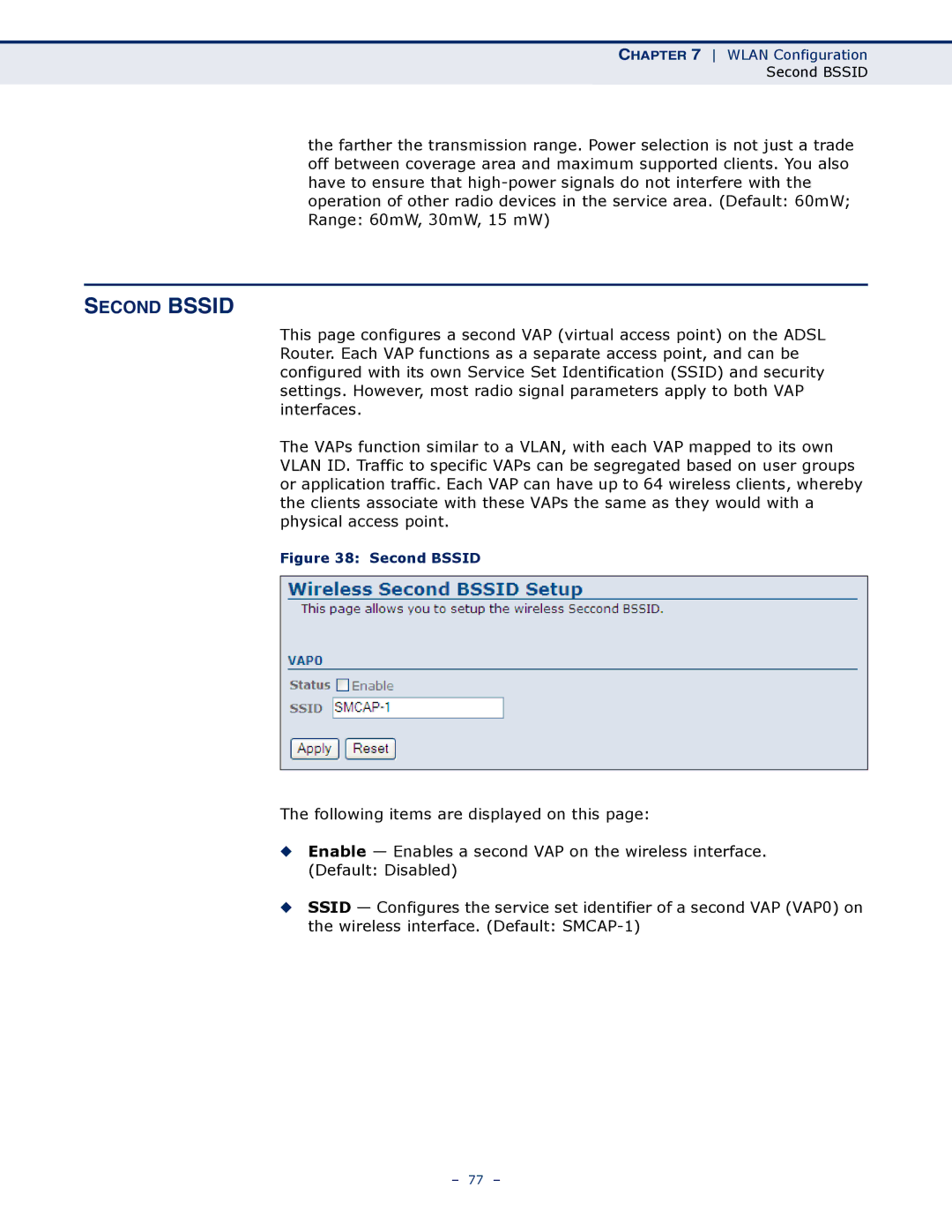
CHAPTER 7 WLAN Configuration
Second BSSID
the farther the transmission range. Power selection is not just a trade off between coverage area and maximum supported clients. You also have to ensure that
SECOND BSSID
This page configures a second VAP (virtual access point) on the ADSL Router. Each VAP functions as a separate access point, and can be configured with its own Service Set Identification (SSID) and security settings. However, most radio signal parameters apply to both VAP interfaces.
The VAPs function similar to a VLAN, with each VAP mapped to its own VLAN ID. Traffic to specific VAPs can be segregated based on user groups or application traffic. Each VAP can have up to 64 wireless clients, whereby the clients associate with these VAPs the same as they would with a physical access point.
Figure 38: Second BSSID
The following items are displayed on this page:
◆Enable — Enables a second VAP on the wireless interface. (Default: Disabled)
◆SSID — Configures the service set identifier of a second VAP (VAP0) on the wireless interface. (Default:
– 77 –
